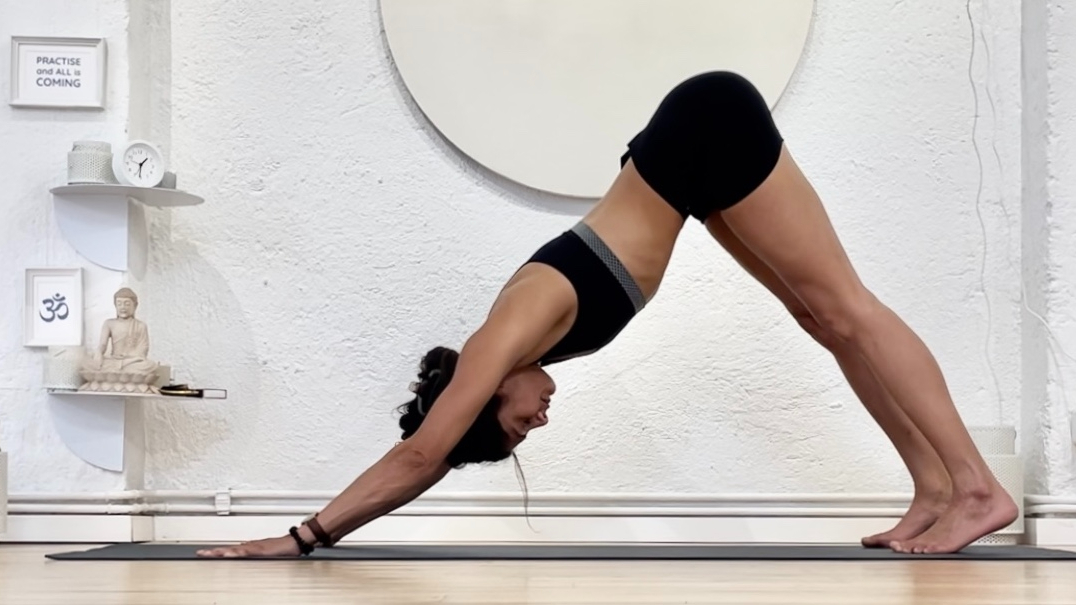
Sitting down too much, not stretching, and having muscle injuries elsewhere are common contributors to hip and lower back problems. However, you can help prevent these mobility difficulties with a short yoga for hips and lower back routine.
While some strength workouts require lots of equipment or a gym to get results, you only need one of the best yoga mats for some underfoot grip and a more comfortable experience during floor-based poses.
Even if you don't have trouble with your mid-body, the hips and back are the foundation of a functional body that moves well, says expert yoga teacher, Jodie Roberts.
“Sitting down a lot means we overuse some muscles and underuse others in our hips and low backs. This can lead to poor hip mobility, poor movement patterns, poor posture, inhibited muscles and injuries and pain, but yoga can be a great tool to help,” she says.
This is why we asked Roberts to design a short, 10-pose yoga for hips and lower back routine you can do at home or the gym, and when you're short on time, to stretch out the muscles and undo the effects of prolonged sitting.
10-move yoga for hips and lower back routine
Like the top yoga stretches for beginners, the poses in Roberts' routine are accessible to all experience levels and suitable for at-home practice. It's designed as a complete flow session, although you can always do your favorite poses outside of your dedicated practice.
1. Wide-legged child’s pose
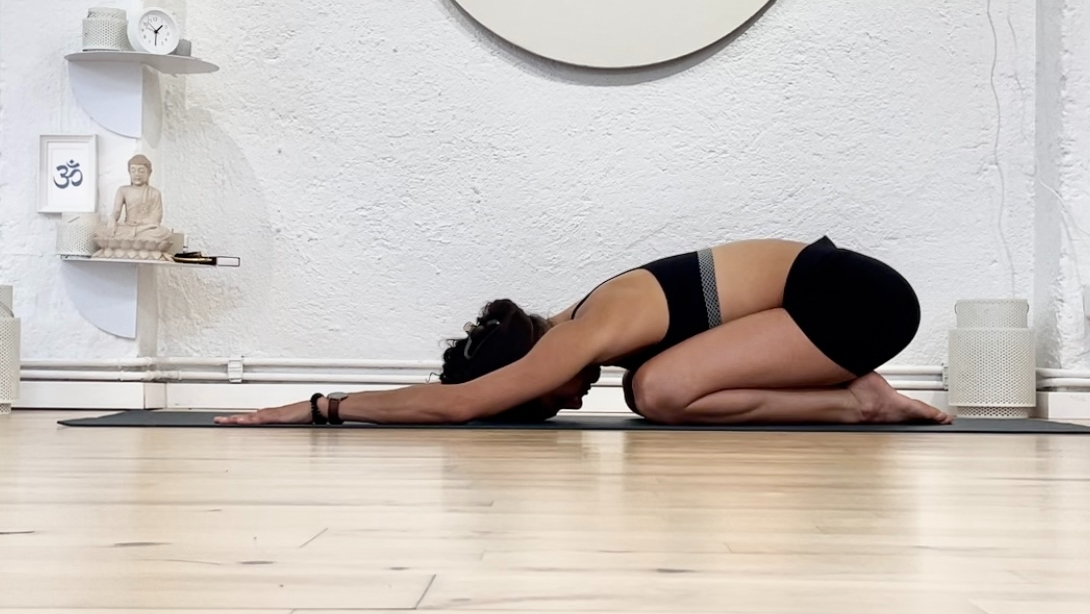
Child’s pose is a great way to ease into yoga. It is physiologically soothing and offers a passive release for the back, decompression of the spine, and stretch for the hips, while gently compressing the hip flexors.
- Kneel on your mat with toes touching and knees apart. Lean your head forward towards the floor near your knees.
- You can put your head on cushions or place your hands under your forehead, and stay for a few breaths, allowing your hips to descend towards your feet.
2. Cat-cow and circles
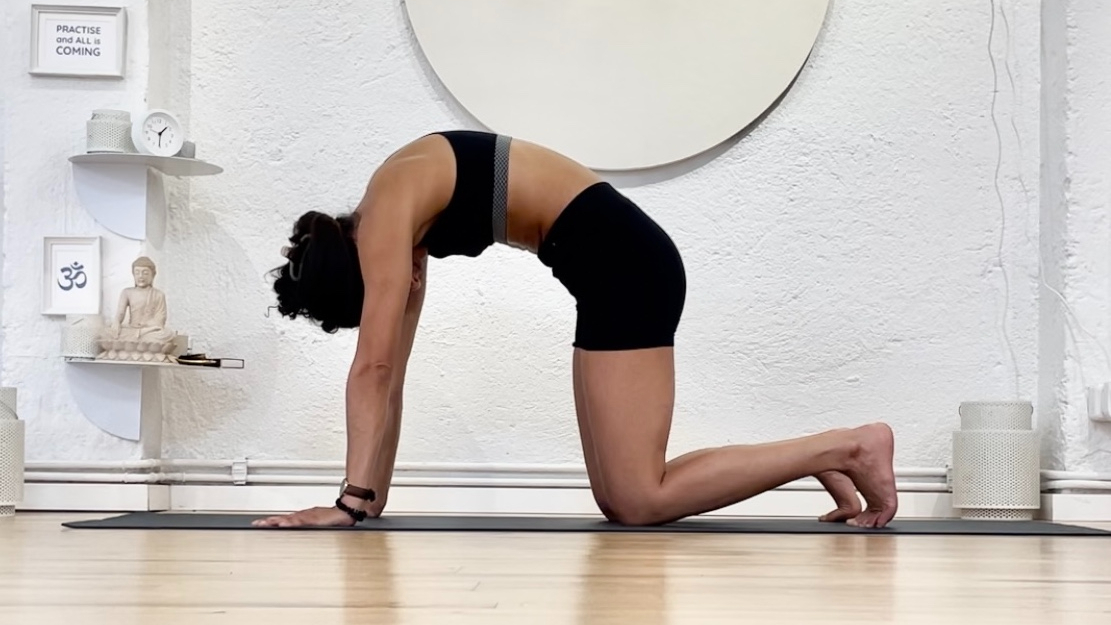
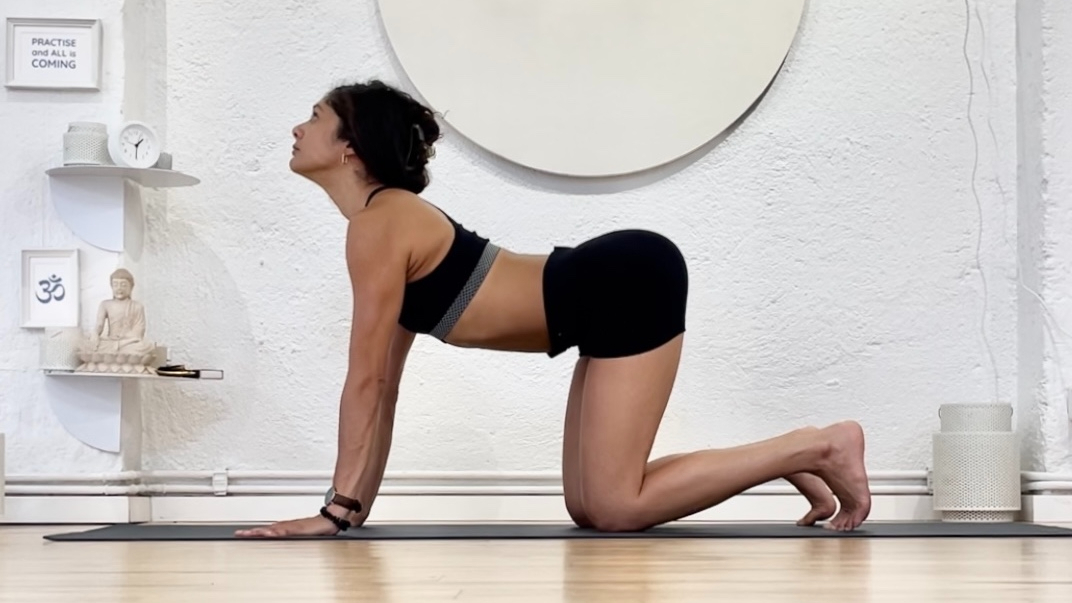
The combination of cat and cow pose is a classic in yoga and for good reason: it’s a great way to mobilize the spine, plus it feels good. Add in hip circles to mobilize the hips, too.
- Come up to all fours, with wrists under shoulders and feet under knees. Inhale, tilt your hips and tailbone up as you look forward for cow pose.
- Exhale as you round the spine and push the floor away, looking down for cat pose. Do both poses a couple of times.
- Next, lean back as if you are entering child’s pose and circle your hips to the right side, then forward towards your right wrist, and circle back to the left. Repeat a couple of times in each direction.
3. Downward dog with wiggles

This active super-stretch decompresses the lower spine and releases your back body, including calves, hamstrings, glutes, and shoulders. It promotes good posture, stability, and balance.
- From all fours, tuck your toes and bring your bottom up towards the ceiling. Stretch your legs up and back, keeping a straight back and bend your knees if needed.
- Peddle your legs one at a time and turn your head from side to side. You can drop one knee at a time down to the floor, looking towards it for a gentle twist.
- Move intuitively and find any stretches or wiggles that work for you. When you are ready come to stillness for a few breaths.
4. Twisted lunge
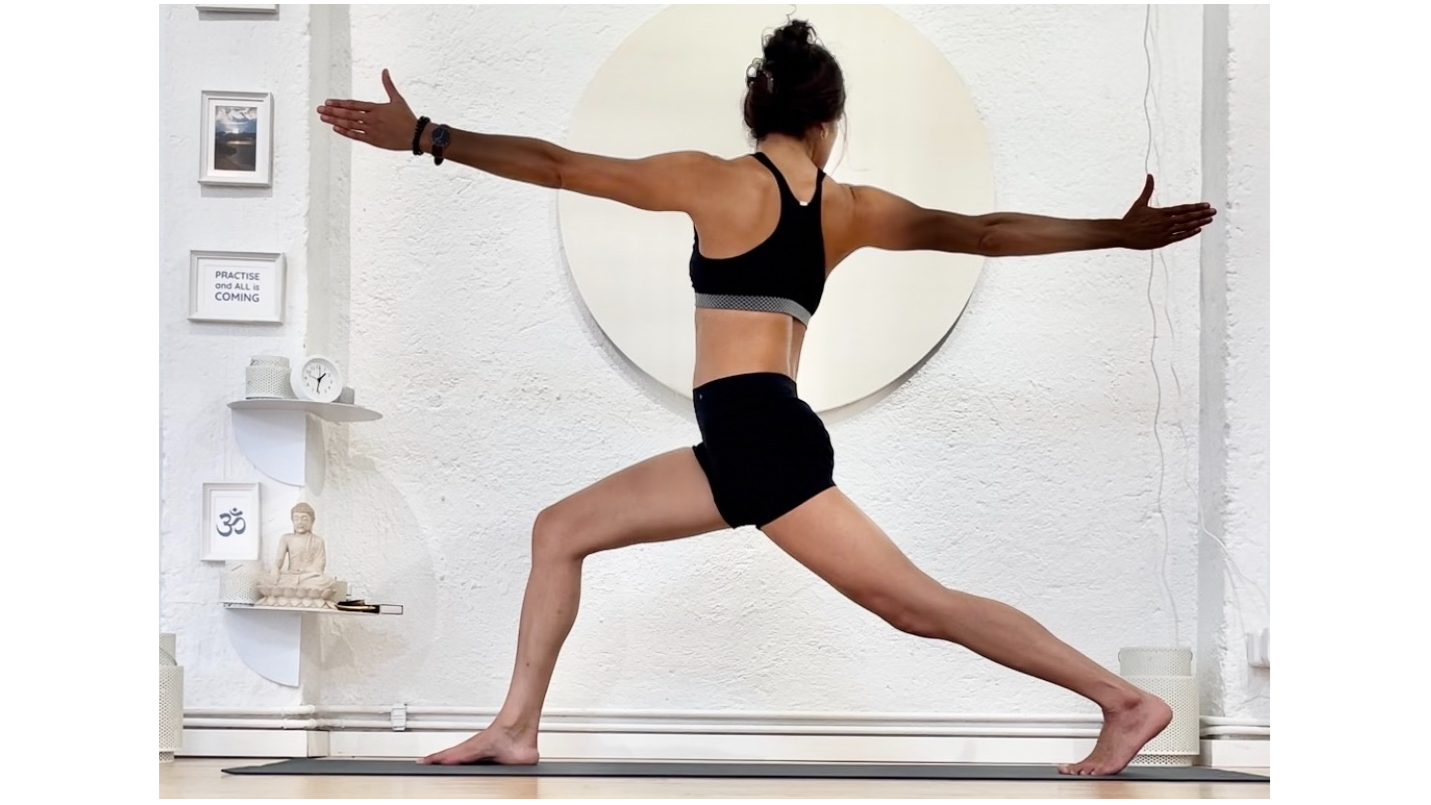
A power pose for working your lower back and hips, this twisted lunge helps improve balance and stability, strengthens your legs, glutes, and core, and stretches the hip flexors and lumbar spine.
- Step your right foot forwards by your hands and straighten up to high lunge. Bend the back knee slightly to help stabilize the pelvis. If you prefer, keep your back knee on the ground for stability.
- Lift your arms overhead and then twist towards your bent knee bringing your left arm forwards and right arm backwards.
- Hold here for a few breaths, switch sides, and repeat.
5. Malasana
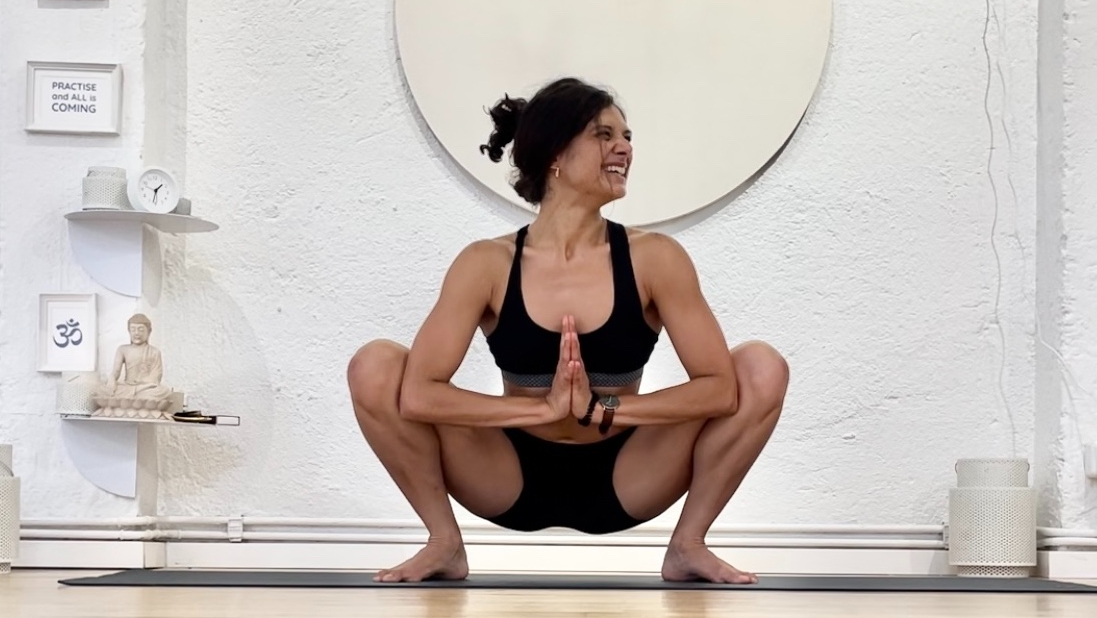
Squats are beneficial for the hips and lower back as they offer a chance to deeply decompress the spine and adductors. The inner hip flexors are compressed while the outer hips and groin muscles are stretched.
- Bring your feet mat wide, with toes at 45 degrees. Squat down with your elbows inside your knees. If the heels are off the floor place cushions or yoga blocks under them to find stability.
- Your hands can either rest on the floor for balance, or try bringing them to a prayer position in front of your chest with your elbows pushing into knees and knees pushing into the elbow. Try pushing your big toes into the floor to activate glutes.
6. Lizard
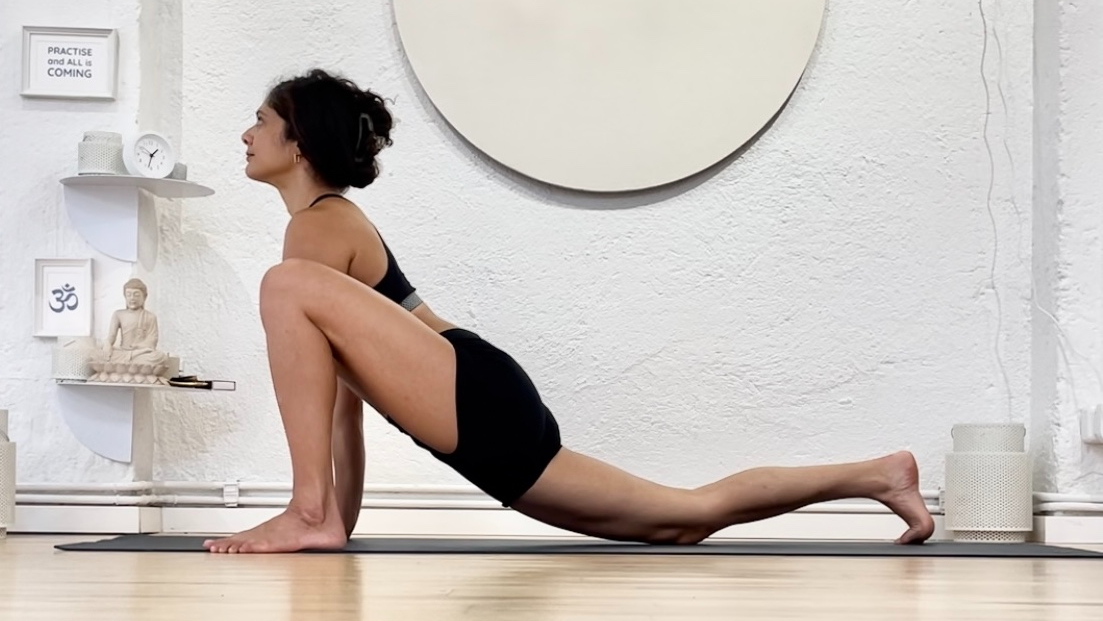
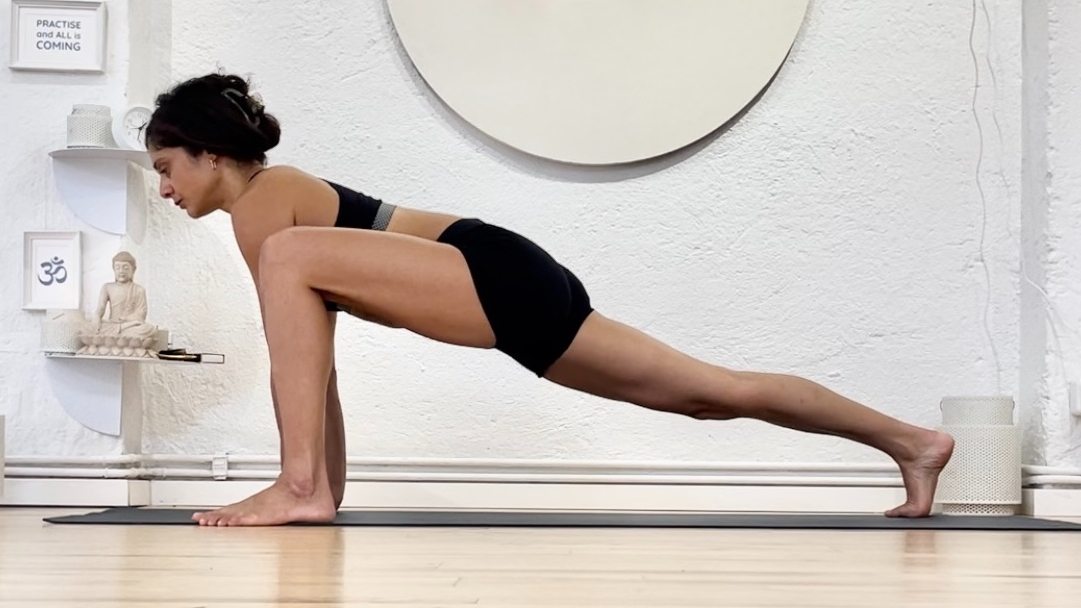
The lizard pose is a deep hip stretch to help increase mobility and flexibility. It stretches your hip flexors and quads, so its the perfect antidote to lots of sitting,
- Place your hands on the ground and step your left foot back, with your right foot on the outside of your right hand. You can choose whether you have the back knee off or on the floor in this pose.
- Rest your elbows on blocks or cushions. Breathe in with a sense of lifting your body, and breathe out as you allow the body to move closer to the ground. Stay for a few rounds of breath, swap over and repeat on the other side.
7. Sphinx
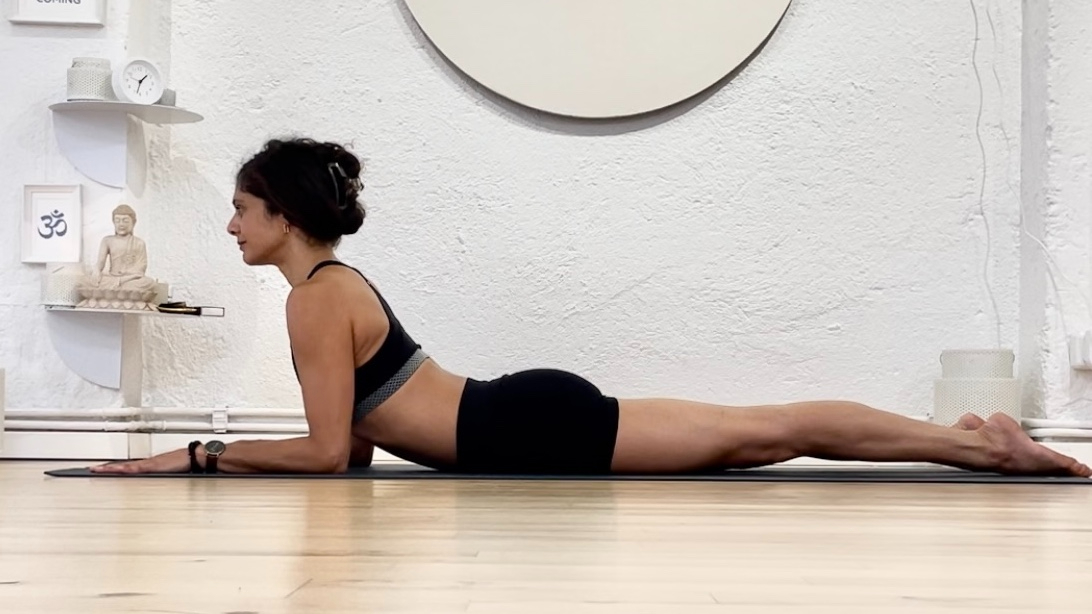
The ultimate back stretch, use sphinx pose to gently compress the low back and achieve spinal extension.
- Lie on your belly and prop yourself up on elbows. Check the elbows are under shoulders and hands are in line with elbows.
- Untuck your toes and look up. Feel like you are gently pulling your front hip bones in towards your navel to activate deep abdominal muscles and help release the low back.
8. Reclined pigeon
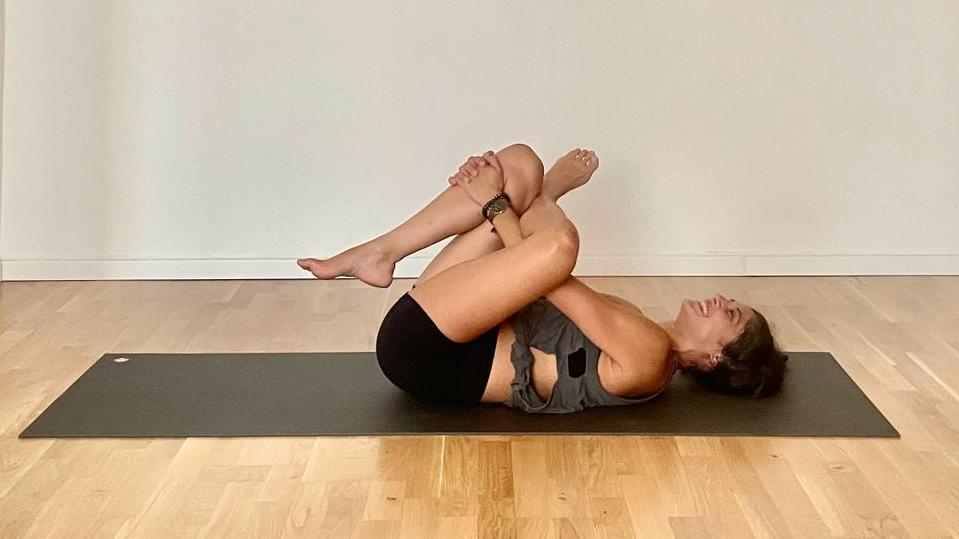
Reclined pigeon is an external hip opener that decompresses the lower spine and stretches outer hips, piriformis, and hamstring attachments, and is a great pose to counter a day of sitting.
- Roll onto your back and bend your left knee with your foot on the floor. Place your right ankle on your left thigh.
- Thread your right hand between your legs and clasp your hands together behind your right hamstring or shin, bringing your legs towards your belly. Stay for a few breaths and swap sides.
9. Bridge
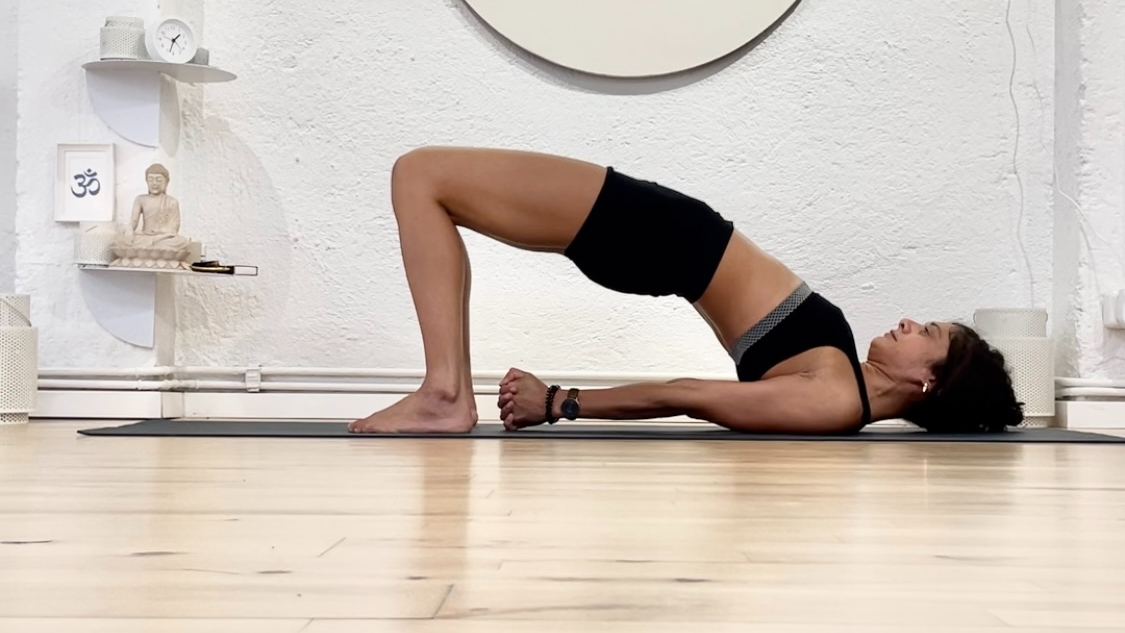
The Bridge pose is designed to strengthen your back muscles, including glutes and hamstrings, and another good posture to relieve the effects of sitting for too long.
- Plant both feet on the floor hip-distance apart wide. Place your arms beside your body and make sure you can touch your feet with your fingers.
- Lift your hips up to the ceiling and keep your thighs and ribs in a line. Interlace your fingers under your back and shuffle onto shoulder blades squeezing them together. Stay here for five breaths.
10. Reclined twist
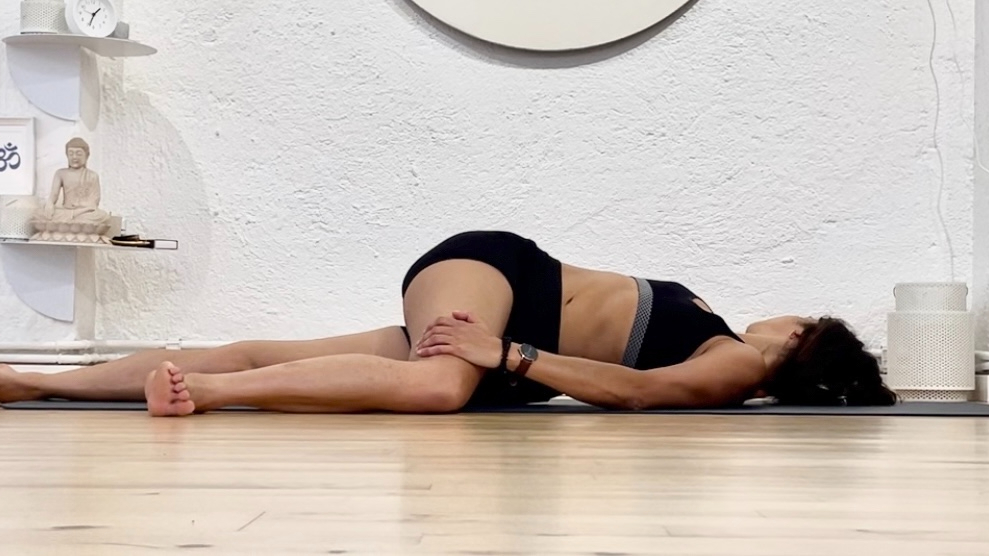
Twists help neutralize and realign the spine and can be useful for back pain. This pose stretches the outer hips and glutes and massages the back of the hips.
- Lie on your back with your legs straight. Pull your right knee into your chest and then allow it to roll over your body to the left.
- Try and stack your hips vertically — you might need to shuffle slightly to the right to achieve this.
- Open your arms to a T-position and, if it feels comfortable, look towards your right hand. Stay for 10 breaths and repeat on the other side.
Finish your sequence with a few minutes lying on your back in Savasana. You can place a bolster or blanket under your knees to reduce any tension in your lower back.
Yoga for hips and lower back routines like this are ideal for boosting your flexibility and increasing your mobility, which are both crucial for helping you stay active throughout your life.
If you want to focus on your mobility a bit more, then it's worth taking on a dedicated hip mobility yoga flow routine. Fortunately, you only need a yoga mat for that routine too, so you can practice both sessions at home.
These are both good options for targeting specific areas of your body. However, if you're looking more generally to get the benefits of yoga, then a short morning yoga routine is a great way to start your day off right.







